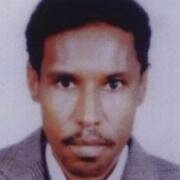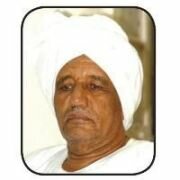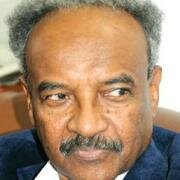In spite of the huge resources allocated for microfinance by the central bank of Sudan commercial banks and the regional and international funds,
microfinance institutions still not yet reached the far rural areas to provide small scale financial assistance for the rural community to uplift their livelihood, and enabling them to arise their income level and improve their living standards, inculcates saving habits and credit culture among the rural people. as the majority of the world’s poor live in rural areas and also in Sudan. Microfinance proved to be an effective tool to alleviate poverty among poor people who are traditionally neglected by commercial banks.
microfinance institutions have the ability to reach the far rural areas but they are some challenges which should be addressed .they think that providing financial services to the rural people is difficult and costly and lack information on their clients which is very important for credit decision making and assist them to estimate their credit worthiness to a reliable degree. Because some of them experienced a high default in some rural areas government should improve the infrastructure in the rural areas to enable banks and microfinance institutions to increase their outreach there. Especially some of these areas experiencing conflicts .and post conflict rebuilding and should provide an enabling legal and regulatory framework. Also the funding source sometimes plays an important role in delinquency rates for clients’ perceptions about the source of fund whether hot or cold money, when the loan capital is generated from local saving or any formal financial institution is considered as hot money, and borrowers will take repayment seriously.
On the other hand cold money is outsider money usually comes from government or donors and usually treated with less respect and its repayment is not a priority, the loan capital comes to refugees from UN agencies for microfinance so as to run their own small projects to generate income and to realize self reliance. Rarely repaid back, in some camps with zero repayment also that comes from government is treated the same way as no fear of losing collaterals or there is no collaterals at all .people in the rural areas are conditioned by past experience and repayment is low for any money received from donors or government..As loan repayment is a sign of financial heath to any financial institution. Microfinance institutions managed to overcome the collaterals barrier by using collateral substitutes they make microloans more available to those who are unbanked. The removal of collateral barriers increased access of poor people to financial services especially in the rural areas .any strategy to combat poverty in Sudan should start from the rural areas.
The second constrain to reach the rural areas from their point of view is the absent of a microfinance enabling environment in the rural areas .the poor infrastructure (roads, telecommunications). The main products of many microfinance institutions—short-term working capital loans with frequent expected repayments—are not well-suited to seasonal or longer-term agricultural activities in the rural areas. , the high operation cost of providing financial services, there for this problem can be addressed by allowing microfinance institutions free to set their own profit margins taking into account the other economic considerations so as to cover their operating and financial cost.
The use mobile branches to provide microfinance services to the rural people the lack of supervision which is very important for loan recovery and the gap of communication between the microfinance institutions and their clients affects this supervision. The poor culture of microfinance among the rural which increases delinquency, so they need capacity building in business skills .lack of marketing for their products they always sell at low prices. Also Seasonality of many rural activities affects their ability to repay the loan. Risks linked specifically to farming, such as variable rainfall, pest and diseases. Prices fluctuations the state of insecurity in some parts of the country makes it impossible for microfinance institutions to open branches there,
The cultural barriers in some rural areas which prevent women to participate in any economic activity out their homes do Sudanese microfinance institutions apply the cost effective measurers .in the face of such constrains its difficult if not impossible for microfinance institutions to extend their outreach to the far rural areas unless these challenges are adequately addressed. In this context its preferable to mention the Ethiopian microfinance experience which used different lending methodologies that fit the rural people and opened up opportunities for further linkages that create demand for different products in the rural areas .the question is how to make microfinance services available to the rural people in a sustainable manner as rural people proved to be more honest.
-
Legal Viewpoint: Islamic Banking CaseNext >




